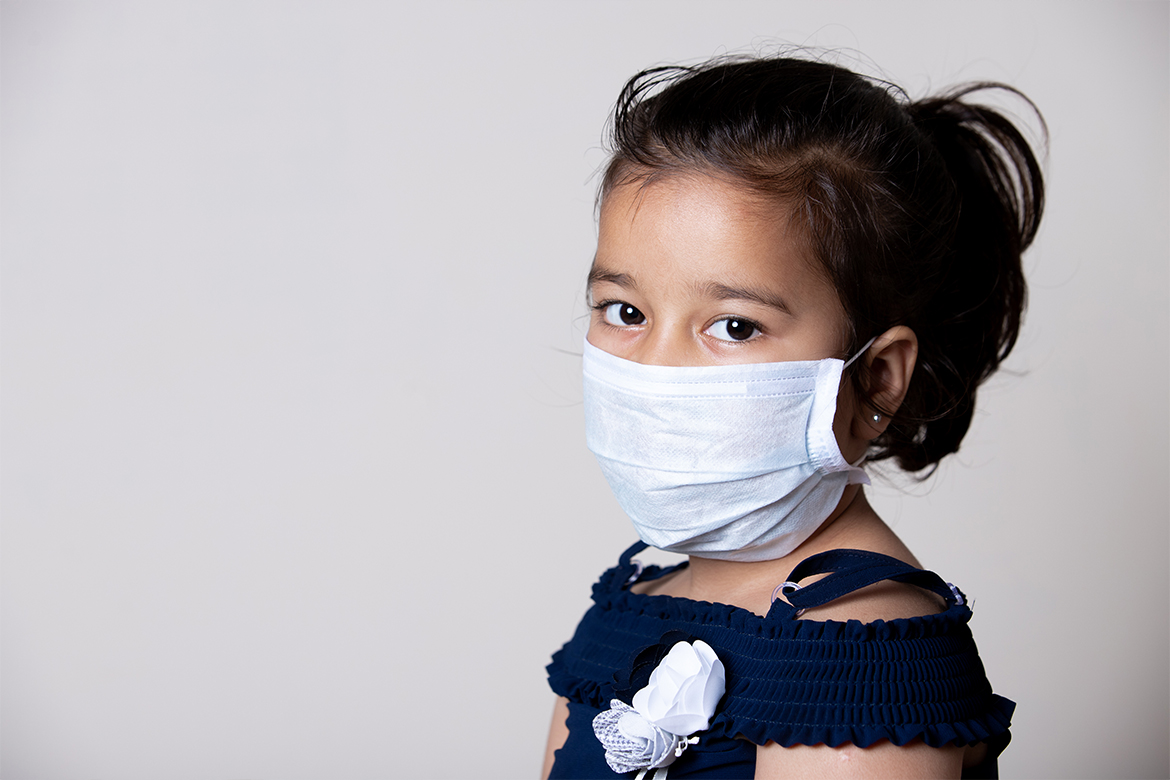The only silver lining of the COVID-19 pandemic is that – Children are spared. Children contribute to only 5-10% of the world burden of COVID-19. This is because they are less exposed, less susceptible and finally less likely to be tested. The hospitalization rate in children is also 20 times less as compared to adults and case fatality rate is 0-0.15% versus 2-3% in adults. The reasons for less affection of children include variable expression of ACE2 receptors, higher circulating lymphocyte numbers, recent immunizations, frequent infections with cross protecting viruses and finally fewer comorbidities. Data so far also exonerates children of being “super spreaders” of the disease.
COVID-19 disease in children may be asymptomatic (50%) or present with mild fever/ cough. While gastrointestinal manifestations are more common, systemic complaints, headache and loss of sense of taste and smell are less common as compared to adults. A history of contact with a sick patient/ COVID-19 household contact is usually present. The risk of disease progression – if at all – is usually in infants, adolescents and those with underlying comorbidities. Diagnostic criteria are the same as in adults with RT-PCR in nasopharyngeal swab as the gold standard test.
Treatment is symptomatic and supportive.
Children are advised isolation at home with parents and prescribed paracetamol, nasal drops and anti tussives along with monitoring of oxygenation and temperature.
There is no role of azithromycin, hydroxychloroquine, ivermectin or doxycycline in management.
Favipiravir is not yet approved in children.
Children who progress to pneumonia should be admitted to an isolation unit. Treatment is usually based on adult trials and includes oxygen, remdesivir, steroids and low molecular weight heparin.
Like children, newborns also fare well with COVID-19. Transplacental transmission rates are very low (<1%) and post natal transmission rates are less than 10%.
Hence babies born to COVID-19 infected mothers are roomed in with the mothers, breast feeding continued with respiratory hygiene and vaccinated as per protocol with BCG, Hep B and OPV. Even if infected, symptoms of COVID-19 are mild in newborns.
The Pediatric inflammatory multisystem syndrome (PIMS-TS/ MIS-C) is the most dramatic presentation of COVID-19 in children.
This syndrome a mimic of Kawasaki disease usually presents after 2-6 weeks of mild infection/ contact with COVID-19 with high fever, rash, conjunctival congestion, gastrointestinal manifestations and sometimes shock.
Investigations show high inflammatory markers and in some children cardiac dysfunction and coronary artery dilatation. The children usually have positive antibodies to COVID-19. The severity varies from mild and self-limiting to life threatening illness.
Treatment entails judicious use of steroids, intravenous immunoglobulin, aspirin, anticoagulation and very good supportive care. The syndrome should be differentiated from other common infections like dengue.
Preventive strategies in children remain : social distancing, proper use of masks in children above 5 years and hand hygiene. COVID-19 vaccines are yet to be evaluated in children.
Finally we must talk about the indirect effects of COVID-19 on childhood health. Social isolation, school closures, excessive screen time, joblessness of parents, delay in vaccinations and seeking curative medical care has resulted in mental health issues, obesity, learning crises, child abuse and impacted care of other diseases like cancer, tuberculosis, malaria and vaccine preventable diseases.
Quoting from the UNICEF “This is a universal crisis, and for some children, the impact will be lifelong”.
 Back to Site
Back to Site